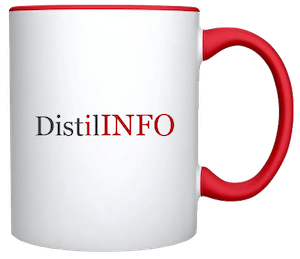In order to celebrate the next decade (although the internet is confused whether its actually the end of the decade…), we’re taking a step back and listing our picks for the 9 most influential healthcare companies of the 2010s. If your company is left off, there’s always next decade… But honestly, we tried our best to compile a unique listing that spanned the gamut of redefining healthcare for a variety of good and bad reasons. Bon appétit!
1. Epic Systems Corporation
The center of the U.S. electronic medical record (EMR) universe resides in Verona, Wisconsin. Population of 13,166. The privately held company created by Judith “Judy” Faulkner in 1979 holds 28% of the 5,447 total hospital market in America. Drill down into hospitals with over 500-beds and Epic reigns supreme with 58% share. Thanks to the Office of the National Coordinator for Health Information Technology (ONC) and movement away from paper records (Meaningful Use), Epic has amassed annualized revenue of $2.7 billion. That was enough to hire the architects of Disneyland to design their Google-like Midwestern campus. The other amazing fact is that Epic has grown an average of 14% per year, despite never raising venture capital or using M&A to acquire smaller companies.
Over the years, Epic has been criticized for being expensive, non-interoperable with other EMR vendors, and the partial cause for physician burnout. Expensive is probably an understatement. For example, Partners HealthCare (to be renamed Mass General Brigham) alone spent $1.2 billion to install Epic, which included hiring 600 employees and consultants just to build and implement the system and onboard staff. With many across healthcare calling for medical record portability that actually works (unlike health information exchanges), you best believe America’s 3rd richest woman will have ideas how the country moves forward with digital medical records.
My very first interview out of undergrad was for a position at Epic. I chose a different path, but have always respected and followed the growth of the company over the past decade. In a world where medical data seems like tomorrow’s oil, a number of articles have speculated whether Apple or Alphabet would ever acquire Epic? I don’t buy it. I’m thinking it’s much more likely that 2020 is the first year they acquire a company. How you doing Athenahealth?
2. Theranos
Want to publish your own articles on DistilINFO Publications?
Send us an email, we will get in touch with you.
No one can argue Theranos didn’t change the game in healthcare forever… for the worse. I do my best to give all healthcare founders the benefit of a doubt, but Elizabeth Holmes and Ramesh Balwani make that nearly impossible. Turns out that an all-star cast of geopolitical juggernauts on your Board of Directors and the black turtleneck of Steve Jobs is not the recipe for success. Founded by 19-year Elizabeth Holmes, Theranos raised over $700 million at a peak valuation of $9 billion. In retrospect, they have become the poster-child for Silicon Valley’s over-promise and under-deliver mantra. The only problem is that instead of food delivery, their failures resulted in invalid blood testing that could’ve really hurt people.
Despite this failure, the mission and purpose would’ve been tremendously impressive. Cheaper blood tests that require only 1/100 to 1/1,000 the amount of blood that LabCorp or Quest Diagnostics needed. I think the craziest part of the whole saga was that seemingly sophisticated healthcare leaders thirsted for the new technology to beat competitors and improve patient convenience. Before the technology was proved defunct, Theranos convinced Safeway to invest $350 million to retrofit 800 locations with clinics that would offer in-store blood tests. Theranos convinced Walgreens to invest $140 million to develop a partnership that would help beat CVS. Theranos partnered with Cleveland Clinic to test its technology and was working with AmeriHealth Caritas and Capital BlueCross to become their preferred lab provider.
To be clear, they weren’t the first, and won’t be the last healthcare company to fail. I only hope that this extremely well documented (thanks Hollywood) experience has re-focused founders and investors towards building sustainable growth companies that actually help patients live higher quality lives, not just make people money as quickly as possible.
3. One Medical
Thanks to Tom Lee and the One Medical crew, primary care is now investable. Whether you’re talking about private equity or venture capitalists, many have dived head first into the space in search of value-based care treasure. One Medical is the most well-known tech-enabled primary care practice, with 72 clinic locations across seven states, and new locations opening in Portland, Orange County, and Atlanta. The Carlyle Group liked the company so much that it invested $350 million in August 2018, at a reported $1.5 billion valuation. This has led to a number of primary care focused companies (ChenMed, Iora Health, Forward) to amass significant valuations that historically would’ve seemed optimistic. However, the elevation of the primary care provider from the “punter” to the “quarterback” of a patient’s medical journey has lifted all boats.
Interestingly, One Medical has unique differentiators over the traditional primary care competitors. For example, One Medical limits doctors to seeing 16 patients a day, versus the average physician seeing 20-30 patients a day. One Medical also built its own medical records in hopes of a more user friendly experience, instead of outsourcing to practice-based EMRs. One Medical charges $199 annually to each patient to help make up for lower volume, and in return provides same-day appointments, onsite lab draws, and a slick app that allows online appointment scheduling and telehealth consults with providers 24/7. They are also adding capabilities and services to cover mental health and pediatric services to increase revenue.
This change is remarkable. Historically, primary care has been a low-margin business with high administrative and staffing costs, along with physician burnout and regulatory burden. One Medical pioneered the concept of a more modern primary care experience, and I am looking forward to their initial public offering (IPO) targeted for early 2020 and whatever Tom Lee is cooking up at Galileo.
4. Centene
Centene is my favorite health plan to study over the past decade. You would never know that the second largest publicly-traded company headquartered in Missouri was originally started by Elizabeth “Betty” Brinn in Milwaukee, Wisconsin. Under-hyped, which is rare in healthcare nowadays, Centene has quietly grown to become the largest player in both the Medicaid managed care and Affordable Care Act (ACA) exchanges. Under Michael Neidorff’s leadership, Centene now serves 32 states with over 15 million lives and 53,600 employees. They were most recently ranked #51 on the Fortune 500 list. In addition, they are about to grow with the $17.3 billion acquisition of WellCare. Here’s a brief rundown of some major events that demonstrate why I’m so bullish on Centene dominating another decade:
- April 2018: WellCare and Centene awarded Medicaid managed care contracts in Florida.
- July 2018: Centene acquires Fidelis Care and their 1.6 million New Yorkers for $3.75 billion. This single-handedly gives Centene the leading Medicaid share in the state.
- September 2018: WellCare acquires Meridian Health Plan and their 1.1 million lives in Michigan, Illinois, Indiana, and Ohio, for $2.5 billion.
- February 2019: Centene and WellCare awarded Medicaid managed care contracts in North Carolina.
- December 2019: WellCare awarded Medicaid managed care contract in WellCare (re-procurement underway)
In addition, Texas Medicaid is set to award their STAR contracts for 3.4 million lives between Medicaid and CHIP, of which Centene already won a contract to serve the STAR+PLUS (aged, blind, and disabled population). Seems like a pretty solid guess that Centene will fair pretty well in the STAR RFP rankings. Next decade, I look for Centene to significantly increase their efforts to recruit Medicare Advantage (MA) lives, and I wouldn’t bet against them.
5. Mylan
One word. EpiPen. Mylan, the $10 billion market cap pharmaceutical manufacturer and producer of the epinephrine auto-injector product, EpiPen, became the lightning rod in a consumer and political drug pricing debate in 2016. For those who were living under a rock, here’s the quick recap. Epinephrine auto-injectors are used to treat anaphylaxis (severe allergic reaction). Prior to 2016, Mylan held absolute dominant share of the auto-injector market, hovering around 90% for the first half of the 2010s. The only real competitor was Adrenaclick, produced by Lineage Therapeutics, but they were barely considered a competitor despite having cheaper prices. In 2016, news outlets caught wind of Mylan’s 500% list price increase over a decade ($100 to $600) and a nationwide discussion about drug prices began.
If you asked the Mylan CEO, Heather Bresch, she would tell you that the reason brand EpiPen’s list price increased 500 percent over 7 years is because they invested billions of dollars to significantly increase access in schools and employers across America. These efforts increased the number of EpiPen prescriptions in the U.S. from 2.5 million to more than 3.5 million between 2011 and 2015. She would also tell you that there is a big difference between wholesale acquisition cost price (list price) and net price. This part is often misunderstood by media. The net price takes into account discounts, prescription savings cards, and rebates that Mylan provides to purchasers (PBMs, Employers, Plans). The exact negotiated rebate or discount is different by line of business and organization. However, safe to say that Mylan made a good amount of profit with increasing volume.
At the end of the day, Mylan settled with the U.S. Justice Department for $465 million over claims it overcharged the government. Mylan kept their $600 list price brand EpiPen product with rebates, and added a generic version of EpiPen for $300 list price without rebates and requiring commercial insurance. According to a GoodRx analysis in 2018, the epinephrine auto-injector market now looks much different, with 60% of the market moving to the generic version of EpiPen, 10% of the market remaining with brand EpiPen, and 30% of the market switching to the generic version of Adrenaclick. However, whether generic or brand EpiPen, Mylan makes strong profits and American will continue to discuss the best strategy forward to control drug spend.
Source: The Health Care Blog







